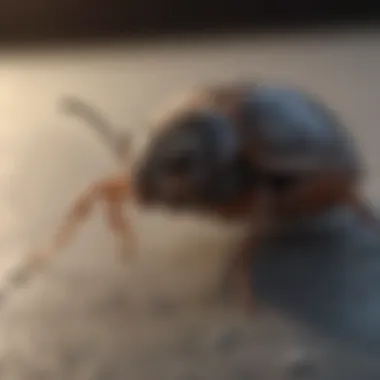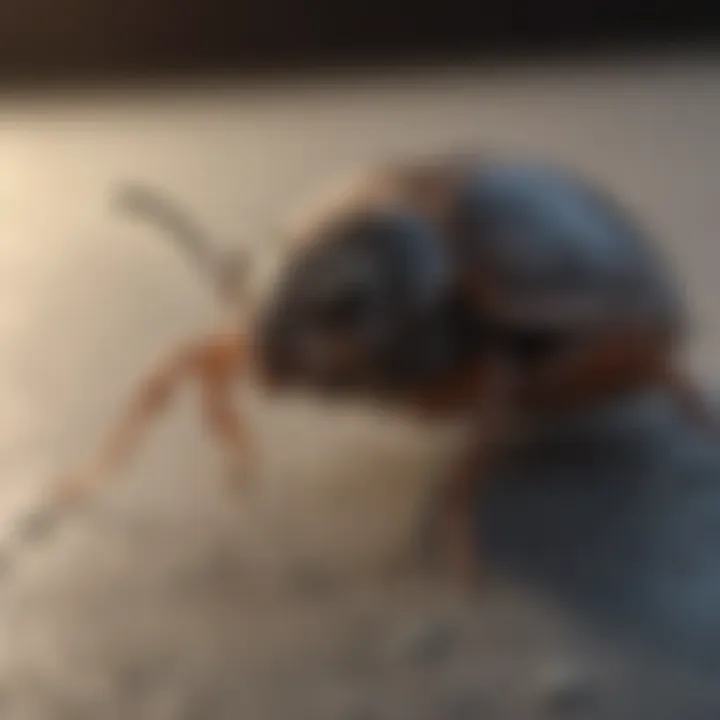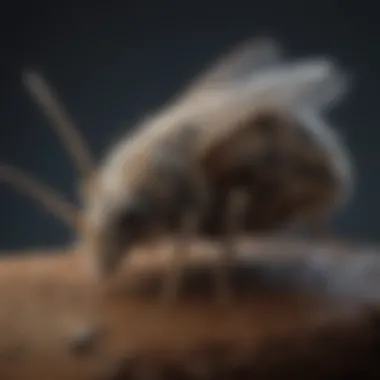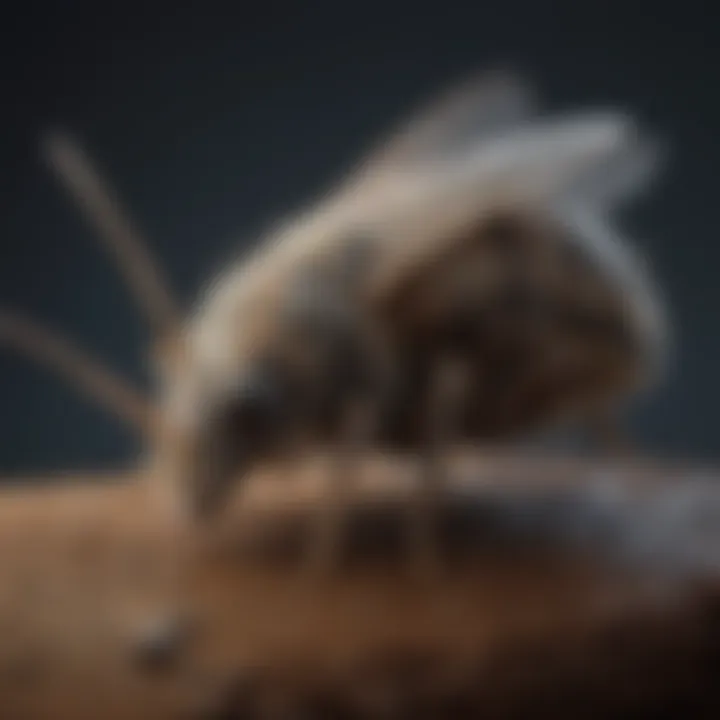Top Pest Control Strategies in Burlington, MA


Preventive Pest Control Strategies
Pest control is often not thought about until there’s a problem. However, turning a blind eye could bring critters scuttling into your warm abode. Effective pest control hinges on understanding prevention. Let’s dive into practical strategies that homeowners in Burlington, MA can implement for household peace.
House Exterior Protection
First up, let’s look at the house’s exterior. A fortress is only as strong as its weakest link, and that includes all the little nooks and crannies where pests can sneak in.
Tips for Sealing Cracks
Every gap, no matter how small, can be an invitation for unwanted guests. It’s wise to routinely inspect the foundation and siding of your home. Cracks around windows, doors, and foundation should be sealed using caulk or weather stripping. These materials are easy to apply and can save you a lot of headaches later on. Here’s what to do:
- Check for gaps regularly.
- Use silicone or latex-based caulk to seal gaps.
- Don’t forget to inspect around pipes and utility lines.
Clearing Debris
A cluttered yard is a pest's paradise. Regularly clean up your garden and yard. Keep branches trimmed and leaves raked up. This not only keeps the area looking sharp but also reduces hiding spots for pests.
Preventing Pests from Entering
Make it a habit to check door sweeps and screens. A well-fitted screen can be your first line of defense against flyer bugs. Ensure doorways are tight, and avoid leaving windows open when not in use.
Yard Maintenance
Moving into the yard, it’s vital to keep the space in tip-top shape. Pests thrive in overgrown areas, so a little TLC goes a long way.
Essential Yard Care Routines
Establish a regular mowing schedule. Lawns that are cut and tidy might not attract as many pests as untamed grass. Keeping plants healthy, watered, and pruned is also non-negotiable.
Methods for Keeping Yard Pest-Free
Using mulch is like laying a welcome mat for ants, so think about alternatives like gravel or rubber mulch. These materials can help keep the pests at bay while still allowing for proper drainage and aesthetics.
Indoor Cleanliness
The inside of your house deserves equal attention. A clean space is harder for pests to infiltrate.
Expert Cleaning Tips and Techniques
Regular vacuuming is crucial. Pay special attention to corners and behind appliances. Utilize air-tight containers for storing food to deter a pest invasion. Keep crumbs and spills under control; it’s the little things that count.
Maintaining a Pest-Resistant Indoor Environment
A routine of decluttering is beneficial too. Less clutter means fewer hiding spots. Also, consider using silica gel packets in storage areas to absorb moisture, making your home less inviting for pests.
Garbage Disposal
A house that smells like a rotten potato is a buffet for pests. How you dispose of garbage can make all the difference.
Efficient Waste Disposal Methods
Invest in sturdy, lidded trash cans. Make it a habit to take out the trash regularly, especially if it contains food waste. Remember, compost bins should be managed properly; without care, they can become a breeding ground for all sorts of pests.
Importance of Proper Garbage Disposal
Don’t overlook recycling either; it needs to be done correctly. Rinse out containers before placing them in the recycling bin to avoid attracting pests.
Other Pest Prevention Strategies
It’s smart to think outside the box for pest prevention.
Innovative Ways to Safeguard Your Home
Consider planting pest-repellent herbs such as basil or mint around your property. These plants not only enhance your garden but also serve as a natural deterrent. Install motion-activated lights to discourage nighttime pests from wandering close to your home.
The essence of effective pest control lies in these preventive strategies. By adopting a proactive mindset, you can significantly decrease your risk of infestations. As they say, an ounce of prevention is worth a pound of cure—especially when it comes to keeping critters at bay!
Prologue to Pest Control in Burlington, MA
Pest control in Burlington is more than just a matter of ridding one’s home of unwanted critters; it’s about maintaining a comfortable living environment. In a town where charm and community run deep, the presence of pests can disrupt the serenity and well-being that residents cherish. As homeowners, understanding the local pest landscape becomes a vital aspect of property management, contributing to the overall health and safety of not just individual homes but the whole neighborhood.
Considering the variety of pests that could call Burlington home, it’s critical to develop strategies that are not only effective but also sustainable. From the enthusiastic ants marching through kitchens to the silent threat of bed bugs lurking in mattresses, the importance of tailored pest control solutions cannot be overstated.
Effective pest control can lead to several benefits:
- Enhanced well-being: A pest-free environment significantly reduces the stress and anxiety associated with pest infestations, allowing families to relax in their own homes.
- Protecting property value: Maintaining control over potential pest problems helps preserve the value of real estate, particularly in a desirable location like Burlington.
- Health considerations: Pests can carry diseases and allergens that impact health, making pest management a crucial element of household safety.
One must also consider the long-term implications of pest control initiatives. It's about establishing preventative measures, ensuring that pests don’t just disperse temporarily but are actively kept at bay. Being proactive, rather than reactive, lays the groundwork for effective pest management. With professional pest services, including insights from Waltham Pest Control, homeowners gain not just immediate relief but also invaluable knowledge about maintaining that relief.
With such an extensive array of pests and pest control methods available, understanding how to approach a problem is key. This article will unpack the local pest issues, delve into effective pest management strategies, and enhance awareness among homeowners about how to create a lasting barrier against unwelcome guests, ensuring the idyllic nature of Burlington can be enjoyed by all.
"Prevention is always better than a cure. By staying informed and prepared, we can maintain a comfortable and healthy home environment for ourselves and our loved ones."
By breaking down pest control into manageable components and recognizing the significance of working with professional services, let’s embark on this journey toward a pest-free Burlington.


Understanding the Local Pest Problem
Understanding the local pest problem is crucial for homeowners and businesses in Burlington, MA. Pests are not just mere annoyances; they can cause significant damage and even pose health risks. By identifying the pests that commonly invade homes and the reasons behind their presence, residents can take informed steps to mitigate these issues effectively.
Recognizing the local pest landscape involves looking at the kind of infestations prevalent in the area. From rodents to termites, each pest has distinct characteristics that affect their potential harm. Ignoring these problems can lead to escalating infestations, which not only challenge home comfort but can also lead to costly repairs and health implications.
Common Pests in Burlington
Rodents
Rodents, like rats and mice, are notorious for sneaking into homes, especially during colder months. Their key characteristic is their incredible adaptability; they can squeeze through tiny gaps, making it all too easy for them to invade. This adaptability is central to understanding why they thrive in urban areas, as peeling paint and gaps around pipes often provide simple entry points.
Unique to rodents, they also reproduce rapidly, leading to escalating numbers in a short period. Consequently, this makes early detection and intervention essential when tackling a rodent problem.
Termites
Termites are another significant concern for Burlington homeowners. They feast on wood, and their ability to go unnoticed until they cause extensive damage is often their most alarming trait. The key characteristic of termites is their appetite; a single colony can consume a pound of wood in a day. For homeowners, this translates into potential structural damage that can cost thousands to fix.
What makes them particularly dangerous is their silent destruction. Understanding the presence of termites often comes too late, hence the need for routine inspections in at-risk areas of the home.
Bed Bugs
Bed bugs have become increasingly common in residential areas. They're small, reddish-brown insects that thrive on human blood, making their presence especially troublesome for households. Their ability to hide in the seams of mattresses and furniture often results in a stealthy invasion.
The unique feature of bed bugs is their resilience; they can go months without feeding, complicating eradication efforts. Their spread usually stems from travel or purchasing used furniture, highlighting the importance of awareness in preventing infestations.
Ants
Ants are often seen as a nuisance rather than a serious pest, but certain species can cause significant damage, especially carpenter ants that burrow into wood. Their social structure allows them to remain persistent in their foraging, seeking food and water sources inside homes. A unique aspect of ants is the pheromone trail they lay for their companions, making their colonies seem unstoppable once they establish a route.
They are prevalent in Burlington, and while small, they can become a formidable challenge if not managed promptly.
Wasps
Wasps present a different sort of threat. Their aggressive behavior, especially when defending a nest, can lead to painful stings. Unlike bees, wasps can sting multiple times, increasing the risk for those who accidentally disturb their nests. Their key characteristic is their paper-like nests, which can often be spotted under eaves or in trees.
What sets wasps apart is their seasonal activity; they tend to build nests in late spring, prompting the need for vigilance among homeowners during this period.
Factors Contributing to Pest Infestations
Climate
Burlington's climate plays a significant role in pest activity. The warm summers and cold winters create a cycle where certain pests thrive in the warmth, while others seek shelter indoors during winter months. This understanding helps residents prepare for seasonal invasions, knowing that warmer seasons often bring increased pest activity.
Unique to the climate aspect is its influence on pest migration. Changes in local temperature and weather patterns can push pests into urban areas, highlighting the importance of community-wide pest management practices.
Urban Development
Urban development has a profound impact on pest populations. As the landscape changes, it offers new habitats for pests and leads to more encounters with humans. Construction sites can disturb natural habitats, prompting wildlife to seek refuge indoors. The increased food sources created by human development can also attract pests in droves.
What’s unique here is that urbanization can disrupt local ecosystems, allowing certain pest populations to explode, amplifying the need for effective pest control strategies.
Lifestyle Choices
Lifestyle choices, such as cleanliness and food storage habits, directly influence pest infestations. Poor sanitation practices can make a home more attractive to pests, as easy access to food and shelter becomes an open invitation. The unique feature about pest control in terms of lifestyle is the proactive approach homeowners can take through simple daily practices to minimize their risk.
For example, proper waste management and regular cleaning routines prevent pests from finding a welcome mat at the front door. In this instance, the homeowner plays a critical role in the overall pest management process, showcasing how personal habits can significantly affect pest presence.
The Importance of Professional Pest Control Services
Dealing with pests is a reality nobody looks forward to. When a home becomes infested, it’s more than just an annoyance; it can affect the comfort and safety of your living environment. This is where the importance of professional pest control services comes into play. Hiring experts like Waltham Pest Control can make all the difference.
Benefits of Hiring Waltham Pest Control
Expertise and Experience
What sets Waltham Pest Control apart is their deep well of expertise and experience. Folks who work there know the ins and outs of pest behaviors and the latest methods for tackling them. You see, most people can try a DIY approach, but without the right knowledge, it often leads to more complications. These experts have dealt with pests day in and day out, giving them a kind of sixth sense about what will work and what won’t. Their hands-on experience allows them to efficiently identify the pest type and recommend tailored solutions. What’s the bottom line? When a professional is involved, it not only saves stress but often time and money too.
Access to Advanced Tools
Another significant advantage of hiring Waltham Pest Control is their access to advanced tools and technologies. These aren’t just your run-of-the-mill repellents from the store. Their arsenal includes specialized equipment designed for pest eradication that most homeowners would either overlook or not even know to use. The key characteristic here is effectiveness; they’re able to target the pest problem right at the source. By employing these advanced methods, you have a better chance of achieving long-lasting results. But be aware, sometimes these tools can be overkill for a minor problem.
Long-Term Cost Savings
Lastly, let’s talk about long-term cost savings. When you get right down to it, pest control is an investment. Many times, people may hesitate to call in professionals because they fear it will cost too much initially. However, not addressing a pest issue can lead to far greater expenses down the line, like property damage or health hazards. Waltham Pest Control provides services that may seem pricier upfront, but they can ultimately save you from spending more later on. Their integrated approach to pest management translates to reduced future risks.
"Prevention is better than cure; you don’t want to find yourself facing a bigger problem down the line."
In summary, seeking the assistance of professional pest control services isn’t just a wise choice; it’s often a necessary one. The expertise, access to advanced tools, and potential long-term savings mark a sound route to maintaining a pest-free home. While some may choose to handle pest problems solo, engaging professionals usually leads to superior outcomes.
Integrated Pest Management Approaches
Integrated Pest Management (IPM) stands as a central pillar in pest control strategies, particularly in a setting like Burlington, MA. Employing IPM not only addresses pest problems but also emphasizes environmental sustainability and long-term solutions. This approach is vital for homeowners looking to balance effective pest management while maintaining a safe environment. It integrates various strategies tailored to meet specific needs, providing a comprehensive solution that avoids reliance on chemical treatments alone.
What is Integrated Pest Management?


Definition
Integrated Pest Management is a holistic approach that combines multiple disciplines for effective pest control. Unlike traditional pest control methods, IPM focuses on understanding the life cycles of pests and their interaction with the environment. One notable characteristic of IPM is its emphasis on prevention, aiming to minimize pest problems before they escalate. Homeowners benefit from this strategy as it fosters an ecosystem that reduces the likelihood of infestation while addressing current issues.
Philosophy Behind IPM
The philosophy of IPM revolves around the idea that the pest control process should be sustainable and ecologically responsible. This methodology advocates for the use of pest control methods that are as non-toxic as possible. The key characteristic here is the prioritization of prevention and education, making it a popular choice for homeowners who are increasingly aware of their environmental footprint. However, while this approach is beneficial, it requires a commitment to continuous monitoring and adjustment based on pest activity, which some might find daunting.
Steps in Integrated Pest Management
IPM employs a systematic process that includes several crucial steps. Each stage builds upon the last, which allows for a well-rounded approach to controlling pests efficiently.
Inspection
The first step, inspection, is crucial in identifying the presence of pests. It lays the groundwork for effective pest management by highlighting possible infestation sources. An effective inspection will often reveal areas of concern within the home, from damp basements inviting termites to clutter that attracts rodents. By focusing on spotting the problem early, homeowners can address potential issues before they spiral out of control.
Identification
Once pests are suspected, proper identification follows. Understanding the specific type of pest involved is vital for selecting the appropriate treatment. This process not only considers the pest's species but also its life stage, behavior, and habitat preferences. The strength of this step is its direct impact on how one addresses the pest issue. For example, a bed bug may need a completely different approach than a wasp nest, making identification a cornerstone of effective pest control.
Monitoring
The monitoring step involves regular observation to assess the effectiveness of the current strategies in place. This aspect is beneficial as it allows homeowners to gauge pest populations and track changes over time. Monitoring can signify whether the preventive measures are working or if further action is needed. One unique feature of this step is its dual purpose; it can also educate homeowners on pest behavior, helping them to understand when a new infestation may occur.
Prevention and Control
The final step in an IPM approach combines prevention and control strategies. This phase is where the techniques previously discussed come together to establish a lasting solution. Effective prevention might involve sealing entry points and maintaining cleanliness, while control strategies could use both chemical and non-chemical treatments based on the ongoing assessment of the problem. The great advantage of this step is its adaptability; strategies can be tweaked as new information becomes available about pest patterns or environmental conditions.
"Integrated Pest Management is about creating balance—once you understand how the system works, you can more effectively manage the pests without too much disruption."
Adopting Integrated Pest Management not only addresses immediate pest concerns but does so in a way that promotes a healthier environment. For homeowners in Burlington, this approach can lead to greater peace of mind and a more sustainable method of living alongside nature.
Regulatory Environment for Pest Control in Massachusetts
Navigating the pest control landscape isn't just about employing the right techniques; it requires an understanding of the regulatory environment that governs these practices in Massachusetts. Such regulations are in place for a reason—they ensure the safety of the public and the environment while guiding pest management professionals in the ethical use of their resources. Knowing the regulations aids homeowners and pest control companies alike in making informed decisions, ensuring not only effective pest control but also compliance with the law.
Licensing and Certification
State Regulations
In Massachusetts, state regulations play a pivotal role in pest control practices. They stipulate that pest control companies must be licensed and adhere to a strict code of conduct when applying chemical substances. This is especially important in an era where environmental concerns are at the forefront. By having these regulations in place, the state seeks to protect both its residents and the ecosystem from possible harm.
One key characteristic of these regulations is that they are developed based on comprehensive studies and expert opinions, ensuring they are well-rounded and effective. This is a significant advantage because it minimizes risks associated with pest treatments. However, navigating these regulations can sometimes feel like wading through molasses, especially for newcomers in the field.
Types of Licenses
When discussing types of licenses, it’s essential to recognize that not all pest control providers are created equal. Massachusetts distinguishes between various types of licenses based on the specific services offered. For instance, a company specializing in termite control will need a different license than one that handles general pest extermination.
The beauty of this licensing system lies in its focus on specialization. This ensures that pest control professionals are genuinely qualified to tackle the specific issues they are addressing. However, the downside might be the barrier to entry for smaller companies who may find it challenging to meet all licensing requirements.
Importance of Certification
Delving into the importance of certification, it is critical to understand how certification enhances the credibility of pest control professionals. In many cases, it serves as a mark of excellence, signaling that a company adheres to industry standards and best practices. Homeowners often feel more comfortable hiring certified professionals, knowing they’re dealing with knowledgeable individuals.
Certifications are often periodic and require continuous education, which is crucial in keeping pest control practices updated according to the latest research and innovations. However, this requirement could be a double-edged sword; while it ensures quality, it also means pest control companies must invest time and resources into ongoing training.
Environmental Protection Regulations
Safe Use of Pesticides
The safe use of pesticides is another vital aspect of the regulatory environment in Massachusetts. Regulations make it necessary for pest control providers to apply these chemicals in a way that minimizes exposure to humans and non-target species. This process not only protects residents but also the delicate ecosystems within the state.
A hallmark of these regulations is the requirement for training and proper labeling on chemicals—making it mandatory for professionals to explain the risks and effects of the pesticides they apply. This enhances the understanding of not just the benefits but the risks too. However, it does limit the range of options accessible for some pest problems, as certain riskier chemicals may be hard to come by.
Reporting Procedures
Another crucial aspect of pest management in Massachusetts is reporting procedures. Pest control companies must document their treatments and the chemicals used, ensuring transparency in operations. This aspect is particularly significant in maintaining a record for public safety and in cases where complaints arise.
The key feature here is that these reporting procedures invite accountability. If a pest control provider fails to comply, the state can take action, ensuring that the community remains safe. Yet, the downside can sometimes be the bureaucratic burden placed on companies, making compliance a chore rather than a duty.
Community Impact
Lastly, we cannot ignore the community impact of pest control regulations. Fostering a pest-free environment goes beyond individual homes; it impacts entire neighborhoods. Local regulations often emphasize community outreach, encouraging pest control companies to engage in educational efforts that help raise awareness about pest issues and prevention strategies.
The significant characteristic of community impact lies in its potential to create a knowledgeable population that can better handle pest problems before they become detrimental. Educated residents might implement basic prevention strategies, easing the burden on pest control services. Nevertheless, it can be tricky, as not all residents are equally engaged, and reaching every corner of the community can be a tough nut to crack.
Choosing the Right Pest Control Strategy
In the quest to keep our homes safe and comfortable, choosing the right pest control strategy becomes a priority. Understanding the nuances of pest infestations can be the key to determining the most efficient and effective course of action. Given the range of pests that Burlington residents might encounter, selecting a strategy that not only addresses the current problem but also helps prevent future issues can make all the difference. Evaluating pest levels and treatment options may seem straightforward, but diving deeper reveals how each decision plays a crucial role in ensuring lasting peace of mind.
Assessment of Pest Levels
Severity of Infestation
It's essential to start by gauging the severity of infestation. A minor annoyance like a few ants might hint at a larger problem brewing beneath the surface. On the flip side, a full-blown rodent invasion can wreak havoc on your home if not addressed promptly. Recognizing how extensive the infestation is can help in developing a tailor-made strategy to tackle the situation effectively.


In this context, a thorough assessment allows homeowners to prioritize actions, targeting the most pressing issues first. This intelligence-driven approach can be a game-changer, making it a popular choice among pest control experts. It's not just about counting the critters; it's understanding how they relate to your property—the unique feature of this assessment is its ability to reveal underlying problems, like compromised insulation or hidden moisture.
Type of Pest Involved
Next comes the type of pest involved. Each pest comes with its own set of habits and weaknesses. Bed bugs, for instance, require distinct measures compared to termites. Knowing what you are up against makes all the difference. Homeowners often find that some pests might be more resilient or difficult to control based on their lifecycle and reproduction rates. This specificity can dictate the urgency and method of treatment.
A clear example is how termites can silently destroy a house from the inside out, while an invasive wasp nest requires immediate intervention. Thus, identifying the type ensures that the strategy is not only effective but also appropriately aggressive, if necessary.
Evaluating Treatment Options
Chemical Treatments
When it comes to choosing a pest control strategy, chemical treatments often stand out. These methods can deliver rapid results, effectively eliminating a wide range of pests in a short time frame. Their ability to penetrate cracks and crevices makes them a reliable choice for those determined to rid their homes of pests swiftly.
However, relying solely on chemicals comes with considerations. Many homeowners are now adamantly focusing on safety, concerned about potential health risks for pets and children. Therefore, the unique feature of this approach is its ability to yield quick results but might necessitate additional precautionary measures following treatment.
Non-Chemical Approaches
On the other end of the spectrum lies the non-chemical approaches, which include natural remedies and preventative measures that do not involve harsher substances. Building an environment that discourages pests is an attractive choice for those who prioritize eco-friendliness. Plus, methods such as setting traps or using essential oils can be effective against many common nuisances.
The downside, of course, is that non-chemical methods might require patience and persistence—they often take longer to achieve visible results compared to their chemical counterparts. This reflective strategy emphasizes its gradual approach to pest management, relying on long-term changes rather than immediate fixes.
Time-Frame Considerations
Finally, when evaluating treatment options, it is crucial to consider the time-frame in which results are expected. Some homeowners may be in a hurry, wanting to see results before the next family gathering. Others might be more relaxed about a timeline, preferring to take a methodical approach. Knowing how long each treatment could take not only helps in planning but also sets realistic expectations.
In an age where quick fixes seem to have dominated so many aspects of life, having a clear idea of the time required for any specific pest control strategy—whether chemical or non-chemical—is incredibly beneficial. Homeowners can then plan accordingly, preventing future frustrations or miscommunications with pest control services.
By understanding the varied factors that inform choosing a pest control strategy, Burlington residents can better ensure a targeted and effective response to their pest problems.
Maintaining a Pest-Free Environment
Maintaining a pest-free environment is of paramount importance for the residents of Burlington, MA. It not only ensures the comfort of your living quarters but also safeguards the health of your family. A controlled environment free from pests can prevent various issues ranging from food contamination to serious health hazards. When pests invade our spaces, they often bring diseases or lead to property damage that can be both costly and unsettling.
Homeowners need to be vigilant and proactive about pest control. Creating a comprehensive strategy that combines multiple approaches can help achieve long-lasting results. This involves both short-term fixes and long-term prevention methods. Through the following subsections, we’ll delve deeper into how you can establish effective pest management techniques right in your home.
Prevention Techniques for Homeowners
Proper Sanitation Practices
Proper sanitation practices play a crucial role in maintaining an environment devoid of pests. The key aspect here is to eliminate potential food sources that attract various creatures, such as ants, rodents, and cockroaches. Basic practices like regularly taking out the trash, wiping down countertops, and storing food in sealed containers contribute significantly to this aim.
One of the most outstanding features of robust sanitation is its simplicity. It doesn’t require advanced tools or special knowledge, making it a beneficial choice for any homeowner. Meanwhile, while it’s often overlooked, the impact of consistent sanitation can’t be stressed enough: it reduces the food availability for pests, thus lowering the likelihood of infestations.
However, it’s essential to remember that neglecting sanitation can lead to infestations that could escalate rapidly. It’s a proactive strategy; once you let it slide, you might find a multitude of pests making themselves comfortable in your home.
Structural Repairs
Structural repairs can also defend your home against pest invasions. A primary characteristic of structural integrity is sealing openings and ensuring that your home’s foundation and exterior walls are in good shape. This includes patching up holes, repairing cracks, and using screens on windows and doors.
The unique feature of structural repairs is that it's more of a long-term investment. They stand as barriers against potential pest entry points, making it a popular choice among many homeowners. Not just pest control, it can improve energy efficiency by preventing air leaks.
However, on the downside, this process can sometimes require professional assistance, making it a more costly option depending on the severity of repairs required. But you can think about it as a preventative measure: the money spent now could save you much more in pest control costs down the line.
Landscaping Tips
When it comes to landscaping, the positioning and type of plants you choose can either attract or deter pests. For instance, certain plants may offer shelter or food to pests, while others can act as natural repellents. A healthy yard, free of standing water and debris, not only beautifies your home but helps keep pests at bay.
The beauty of landscaping tips is that they harmonize aesthetics and pest management. Properly maintained yards not only look good but also work to eliminate hiding spots for pests. Many homeowners appreciate the dual benefits; you'll host friends or family in an inviting space without worrying about wasps or rodents being unwelcome guests.
Yet, this area is not without its challenges. Some may require more attention and time than anticipated. For example, crafting a pest-resistant garden could mean planting specific types of flowers and foliage, which might take some planning and research upfront. Nevertheless, it's a rewarding long-term consideration.
Community Outreach and Education
Workshops and Seminars
Holding workshops and seminars is a way to empower the Burlington community about pest control. These events allow homeowners to learn about best practices and practical tips directly from experts. The key characteristic of such gatherings is the interactive environment; participants can ask questions or share experiences, helping to cultivate a shared understanding of pest management.
Such educational initiatives can be crucial for spreading awareness about local pest problems and preventive measures. They offer unique opportunities for neighbors to learn together, creating stronger community ties.
However, attendance can sometimes be low, often due to family commitments or awareness levels about these events. However, communities that regularly participate tend to have healthier neighborhoods, demonstrating the value of this collaborative approach.
Collaboration with Local Authorities
Collaborating with local authorities can amplify the effectiveness of pest control strategies in Burlington. This kind of partnership can lead to improved pest management practices and even the development of local regulations that safeguard public health. The crucial element of collaboration is that it aligns community efforts with public health goals, enhancing effectiveness through collective resources.
The unique feature here is the potential for comprehensive strategies. Local authorities can provide insights and support to facilitate better overall pest control approaches. Notably, while this method may require ongoing effort and communication, it can prove advantageous in resource mobilization and policy changes beneficial to residents.
The End: A Comprehensive Approach to Pest Control
When it comes to pest control, particularly in a vibrant locale like Burlington, MA, a well-thought-out approach is not just a recommendation; it’s an absolute necessity. From the small twitch of an ant's antennae to the scuttling of rodents, the presence of pests is a clear signal that something is amiss. This article underscores the importance of a coordinated pest management strategy that relies on understanding the local environment, employing expert advice, and maintaining proactive practices.
Key Elements of Effective Pest Control Strategies
- Understanding the Local Ecosystem: It's crucial for homeowners to grasp the specific pest dynamics within their area. Knowledge about which types of pests—be it rodents, bed bugs, or wasps—are commonly found can inform prevention and treatment measures effectively. By working with professionals who understand these local nuances, like Waltham Pest Control, homeowners can ensure that their strategy is tailored to their immediate environment.
- Integration of Methods:
The mixed bag of integrated pest management techniques cannot be overstated. This involves combining chemical treatments with non-chemical approaches. For instance, simple solutions such as sealing cracks, alongside more advanced pest control techniques, create a multi-faceted defense that can dramatically reduce the chances of recurring infestations. - Regulation and Safety in Mind:
Massachusetts has clear regulations governing pest control methods. Compliance with these guidelines not only protects the immediate area but also preserves the health of the community at large. Practicing responsibility in the application of pesticides and understanding the safe reporting procedures can genuinely make a difference in community protection efforts. - Community Involvement and Awareness:
A knowledgeable community stands on firmer ground when it comes to pest control. Educating residents about recognizing signs of infestation and teaching effective prevention techniques fosters a sense of shared responsibility. Workshops led by pest control specialists—particularly those rooted in the local context—can offer valuable insights and create a united front against these unwelcome guests.
Benefits of a Comprehensive Approach
- Cost-Effectiveness: A proactive and integrated approach often translates to long-term cost savings. Handling a pest problem before it escalates averts extensive damage to property and the potential costs associated with more severe infestations.
- Sustainable Solutions: With a comprehensive strategy, there's room for eco-friendly methods that don’t just chase pests away but create an environment that discourages their return.
- Peace of Mind: Ultimately, when a household adopts a structured plan—encompassing knowledge, prevention, and appropriate treatment—it leads to a sense of security. Freedom from pests allows families to enjoy their homes rather than feel like unwilling cohabitors with uninvited guests.
"A stitch in time saves nine." In pest control, taking timely and comprehensive action can mean the difference between a minor nuisance and a major disruption.



